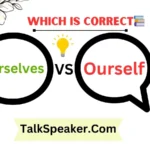Confusion over the phrases “whether it be” and “whether it is” is common among writers and speakers alike.
These two expressions, though similar in appearance, serve distinct grammatical purposes and choosing the wrong one can impact the clarity and correctness of your writing.
This comprehensive guide will dive into the nuances of these phrases, exploring when and how to use them correctly by examining their roles in the subjunctive and indicative moods.
Introduction
When crafting sentences that involve uncertainty or hypothetical scenarios, understanding the correct usage of “whether it be” and “whether it is” is crucial. Both phrases are used to express conditions or alternatives, but their grammatical functions differ. This article will help clarify these differences and provide practical examples to ensure you use these phrases accurately in your writing.
Understanding Moods in Grammar
Indicative Mood
The indicative mood is used to make factual statements or ask questions about reality. It’s the most common mood in English and is used to convey information that is concrete or real.
Examples:
- She says that the meeting is at 10 a.m.
- I believe that the project is finished.
In both examples, the sentences are stating facts or asking about real situations. The indicative mood helps convey certainty and straightforward information.
Subjunctive Mood
The subjunctive mood, on the other hand, is used for hypothetical, wished-for, or uncertain situations. It’s less common in everyday speech but is essential for expressing desires, suggestions, or conditions contrary to fact.
Examples:
- If she were here, she would know what to do.
- I wish that it were not raining.
These examples illustrate how the subjunctive mood handles situations that are not necessarily grounded in reality but are instead imagined or wished for.
Exploring “Whether It Be”
Definition and Context
The phrase “whether it be” uses the subjunctive mood and is employed in formal contexts to discuss hypothetical or non-specific situations. It expresses conditions or alternatives that are not necessarily real but are considered for the sake of argument or speculation.
Examples:
- Whether it be for better or worse, we must accept the changes.
- Whether it be rain or shine, the event will proceed.
In these sentences, “whether it be” introduces conditions that are considered in a hypothetical sense, not asserting their reality but exploring their potential outcomes.
Examples Demonstrating the Subjunctive Mood
The subjunctive mood often appears in more formal or literary contexts. Here’s how “whether it be” is used effectively:
- “Whether it be a small gesture or a grand one, the intention behind it matters.”
- “Whether it be a temporary setback or a major obstacle, we must overcome it.”
In these examples, “whether it be” introduces scenarios that are not concrete but are discussed hypothetically to make a broader point.
Understanding “Whether It Is”
Definition and Context
The phrase “whether it is” uses the indicative mood and is employed when discussing real or factual conditions. It’s used to inquire about or assert the truth of a situation that is considered to be real or likely.
Examples:
- “Whether it is raining or not, we will still go to the park.”
- “Whether it is a holiday or a regular day, the store opens at 9 a.m.”
Here, “whether it is” is used to discuss real, factual conditions and provides a straightforward presentation of possible scenarios.
Examples Demonstrating the Indicative Mood
Using “whether it is” correctly involves addressing actual or realistic scenarios. For example:
- “Whether it is cold or warm outside, the event will take place.”
- “Whether it is an important meeting or a casual get-together, I will attend.”
These sentences use the indicative mood to describe conditions that are considered factual or real, providing clear information about the situations.
Comparing “Whether It Be” and “Whether It Is”
Navigating Correct Application
Choosing between “whether it be” and “whether it is” depends on the mood you need for your sentence. Here’s a side-by-side comparison:
| Phrase | Mood | Use | Example |
| Whether It Be | Subjunctive | Discusses hypothetical or non-specific scenarios | “Whether it be a simple task or a complex one, clarity is key.” |
| Whether It Is | Indicative | Talks about real or factual situations | “Whether it is a holiday or a workday, the store opens at 9 a.m.” |
Identifying Situations for Each Expression
- Formal Writing: In academic papers, legal documents, or formal speeches, “whether it be” is often used to express hypothetical or theoretical conditions. For instance, “Whether it be in science or art, creativity drives progress.”
- Informal Writing: In everyday writing or casual conversation, “whether it is” is more commonly used to discuss actual scenarios. For example, “Whether it is a rainy day or a sunny one, the picnic will happen.”
Common Misconceptions in Usage
Misconception 1: Confusing Subjunctive and Indicative Moods
One common mistake is using “whether it be” when the indicative mood should be applied. This often happens when discussing actual or factual conditions. Ensure that you use “whether it be” for hypothetical situations and “whether it is” for factual ones.
Misconception 2: Overusing Subjunctive Mood
Another issue is overusing the subjunctive mood in contexts where the indicative mood is more appropriate. For example, saying “Whether it be true or not, we need to consider it,” might be incorrect if the intention is to discuss a factual scenario.
Tips for Mastering Contextual Grammar with “Whether”
Practical Tips
- Understand the Mood: Clearly identify whether your sentence requires the subjunctive or indicative mood based on the context—hypothetical vs. factual.
- Practice with Examples: Use varied examples to get comfortable with both phrases. Create sentences where you replace one with the other to see how the meaning changes.
- Consult Grammar Resources: Utilize grammar guides and tools to confirm the correct usage of subjunctive and indicative moods.
Concluding Thoughts
Understanding the difference between “whether it be” and “whether it is” enhances the precision and clarity of your writing. By mastering the subjunctive and indicative moods, you can ensure that your sentences are grammatically correct and convey the intended meaning.
Remember to practice using these phrases in different contexts to build confidence and avoid common mistakes. Keep exploring and refining your grammar skills to improve both your formal and informal writing.
Final Tip: When in doubt, consider the mood that best fits your sentence’s context—hypothetical and speculative for the subjunctive, or factual and real for the indicative.
Feel free to practice and apply these guidelines to your writing, and you’ll master the nuances of “whether it be” and “whether it is” in no time!

Amelia Harris, a passionate educator, simplifies English grammar and vocabulary for learners of all levels. With her engaging style, mastering English has never been easie




